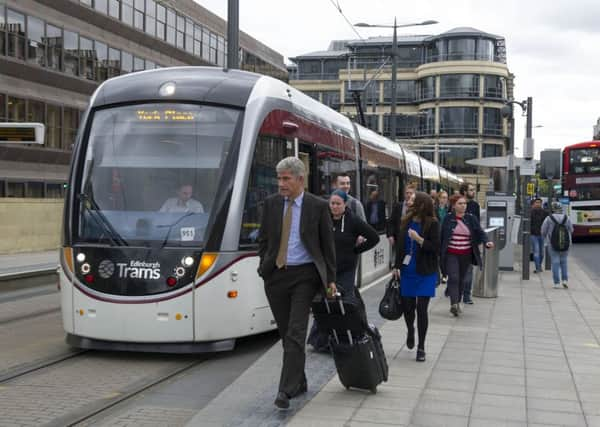Steve Cardownie: It’s unlikely council will shun line from Leith


Councillors will be given the opportunity to inspect the plans in a locked room in the presence of a member of staff and are required to sign in and out, thereby demonstrating that they have availed themselves of this facility and the length of time they have spent poring over the plans (should make for interesting reading!).
Some have already been and some have already made up their minds, including the council leader, who would have also benefited from detailed briefings from officials.
Advertisement
Hide AdAdvertisement
Hide AdI stated in a previous column that, given his previous public statements, he has nailed his colours to the mast and come out in favour of the extension. In a column in Monday’s paper he stated that “the business case is robust, and councillors will now pore over every detail”.
That detail will include the latest financial projections, which show that the final cost is likely to be £207 million, a 20 per cent increase on the initial estimate of £165m.
According to Tom Rye, Professor of Transport Policy and Director of the Transport Research Institute at Edinburgh Napier (based on research “by the world expert in this area”) “we could reasonably expect tram extension costs to rise further and a 45 per cent increase would bring total costs dangerously close to total benefits”.
So it may not be as simple as it looks and the plan to fund the project through borrowing, paid back by future tram revenues along with a special £20m dividend from Lothian Buses could be seriously tested, as will the council leader’s sincerely-held belief that “this means the money spent on the project is not causing ANY additional financial pressure on the council”.
It should go without saying that although steps can obviously be taken to minimise risk, in projects such as these it cannot be extinguished entirely. Although understandable given the circumstances, such an undertaking may be a cause for regret later.
The decision should not be taken lightly, but given what we now know it is extremely unlikely that it will be anything other than the project getting the green light in March.
Why? The city is rapidly changing and over the next decade it is expected to witness the fastest growth in population anywhere in Scotland as the National Records of Scotland’s projections demonstrate. These suggest that the city should be planning for an additional 47,000 people by 2024 and a further 102,000 by 2039.
The number of households is also expected to rise by more than 38,000 (16 per cent) by 2032 and a quarter of this growth is forecast for the Leith Docks and Western Harbour area. The Leith walk area boasts a population density of nearly 28,000 people within an 800 metre radius which is a higher local population density than anywhere in Scotland, including Glasgow.
Advertisement
Hide AdAdvertisement
Hide AdWith half of the population not having access to a car, public transport usage to commute to work is 40 per cent higher than the city as a whole, demonstrating why projected tram usage figures are so high.
Leith has already been let down by the curtailment of the original tram line and many will see the extension as the fulfilment of a promise. So councillors from all parties will have to weigh up the needs of a growing city – a city that is popular and is rapidly changing and evolving – against the needs of the city of today.
Although everything will be done to avoid it, there still might be a risk, although a majority of councillors are likely to decide that there is none – and even if there is, it is a risk worth taking!
Day of reckoning for members
We are fast approaching annual general meeting time for the political groups represented in the City Chambers and whilst some councillors may be weighing up their prospects of advancement, others, with some justification, will be weighing up their prospects of continuing in their present posts.
Alliances may be formed and promises made which is par for the course – with councillors with the poorest record of measuring up to the demands of the job likely to be under threat. Or at least you would think so.
What sometimes happens is that the councillor who has more friends and allies within their respective groups wins the day irrespective of how poor their performance has been.
This has unfortunate consequences for members of the public who rely on councillors to be up to the mark, particularly if they have the responsibility for delivering a service which is crucial to citizens’ everyday lives.
Some councillors may be able to justify their underwhelming record by highlighting matters that were outwith their control and live to fight another day. But whether in administration or opposition, others may be wondering if they have done enough to justify continuing in their role and some, through no fault of their own, will fall victim to naked ambition.